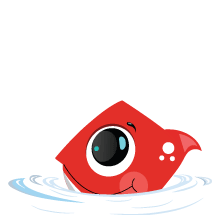Playing with objectives impacts the learning brain
- Bryan Yap

- Dec 3, 2023
- 2 min read
The brain can understand simple day-to-day activities and routines through a process called implicit learning. Implicit learning is a type of learning that occurs without conscious awareness. When we engage in a simple task repeatedly, the brain creates neural pathways that allow us to perform the task automatically. For example, when we brush our teeth, the brain creates a neural pathway that remembers the sequence of movements involved in brushing our teeth. This allows us to brush our teeth without having to think about it consciously.

The same process can occur when we teach children to swim. When we play games and activities that incorporate the objective of learning to swim, the brain of the child is able to learn the skills of swimming implicitly. This means that the child will be able to swim without even realizing it.
One example of how this can be done is by playing the game Simon Says. In this game, the child is given a command, such as "Simon says blow bubbles." The child then tries to blow bubbles. If the child blows bubbles, they have successfully completed the task. Even if the child does not blow bubbles successfully, they have still learned something valuable. They have learned how to control their breathing and how to move their lips in a certain way. These are all important skills that will help them to learn in the future. This process helps the child to develop a positive learning behavior without even realizing it.
Another example is playing the game Marco Polo. In this game, one child closes their eyes and covers their ears, while the other child hides underwater and calls out "Marco!" The first child then tries to find the second child by calling out "Polo!" The first child can only open their eyes when they are underwater, so they have to hold their breath for a short period of time, not exceeding 10 counts, in order to play. This game helps the child to learn how to control their breathing underwater.
By playing games and activities that incorporate the objective of learning to swim, the brain of the child is able to learn the skills of swimming implicitly. This means that the child will be able to swim without even realizing it. This is a more meaningful way to teach children to swim, as it makes the learning process more fun and engaging.
The rewarding part is not necessary for implicit learning to occur. In fact, it can sometimes be counterproductive, as it can make the child focus on the simple objective that they understand rather than the difficult task itself. The most important thing is to create a fun and engaging environment where the child can freely explore and experiment.





























Comments